
Specialty pharmaceutical company Supernus Pharmaceuticals (NASDAQ:SUPN) reported Q2 CY2025 results topping the market’s revenue expectations, but sales fell by 1.7% year on year to $165.5 million. The company’s full-year revenue guidance of $685 million at the midpoint came in 7.6% above analysts’ estimates. Its GAAP profit of $0.40 per share was significantly above analysts’ consensus estimates.
Is now the time to buy Supernus Pharmaceuticals? Find out by accessing our full research report, it’s free.
Supernus Pharmaceuticals (SUPN) Q2 CY2025 Highlights:
- Revenue: $165.5 million vs analyst estimates of $154 million (1.7% year-on-year decline, 7.4% beat)
- EPS (GAAP): $0.40 vs analyst estimates of -$0.06 (significant beat)
- Adjusted EBITDA: $32.97 million vs analyst estimates of $52.9 million (19.9% margin, 37.7% miss)
- The company lifted its revenue guidance for the full year to $685 million at the midpoint from $615 million, a 11.4% increase
- Operating Margin: 7.3%, down from 13.4% in the same quarter last year
- Market Capitalization: $2.32 billion
"Our strong operating performance in the first half of the year was driven by continued strong sales growth of Qelbree and GOCOVRI, which combined accounted for 72% of total net sales in the second quarter of 2025," said Jack Khattar, President and CEO of Supernus.
Company Overview
With a diverse portfolio of eight FDA-approved medications targeting neurological conditions, Supernus Pharmaceuticals (NASDAQ:SUPN) develops and markets treatments for central nervous system disorders including epilepsy, ADHD, Parkinson's disease, and migraine.
Revenue Growth
A company’s long-term performance is an indicator of its overall quality. Even a bad business can shine for one or two quarters, but a top-tier one grows for years. Luckily, Supernus Pharmaceuticals’s sales grew at a decent 8% compounded annual growth rate over the last five years. Its growth was slightly above the average healthcare company and shows its offerings resonate with customers.
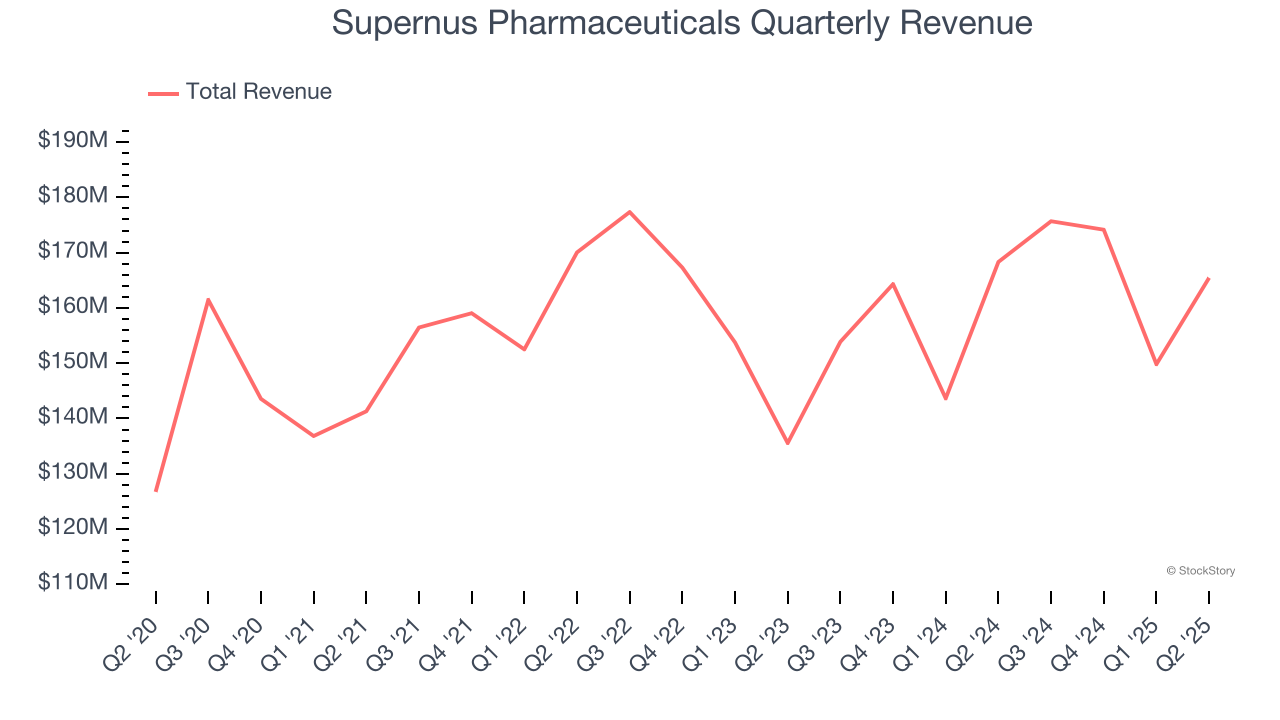
Long-term growth is the most important, but within healthcare, a half-decade historical view may miss new innovations or demand cycles. Supernus Pharmaceuticals’s recent performance shows its demand has slowed as its annualized revenue growth of 2.4% over the last two years was below its five-year trend. 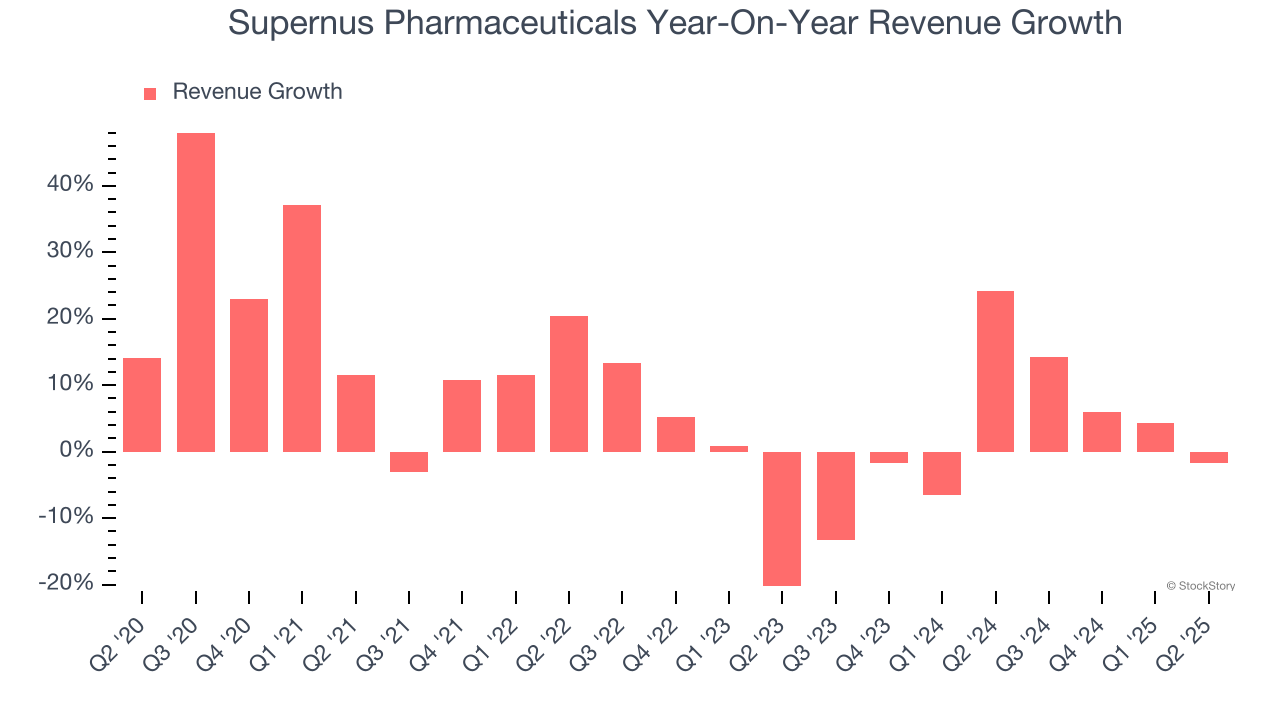
This quarter, Supernus Pharmaceuticals’s revenue fell by 1.7% year on year to $165.5 million but beat Wall Street’s estimates by 7.4%.
Looking ahead, sell-side analysts expect revenue to grow 4% over the next 12 months. While this projection suggests its newer products and services will catalyze better top-line performance, it is still below the sector average.
Here at StockStory, we certainly understand the potential of thematic investing. Diverse winners from Microsoft (MSFT) to Alphabet (GOOG), Coca-Cola (KO) to Monster Beverage (MNST) could all have been identified as promising growth stories with a megatrend driving the growth. So, in that spirit, we’ve identified a relatively under-the-radar profitable growth stock benefiting from the rise of AI, available to you FREE via this link.
Operating Margin
Operating margin is one of the best measures of profitability because it tells us how much money a company takes home after subtracting all core expenses, like marketing and R&D.
Supernus Pharmaceuticals was profitable over the last five years but held back by its large cost base. Its average operating margin of 9.8% was weak for a healthcare business.
Looking at the trend in its profitability, Supernus Pharmaceuticals’s operating margin decreased by 15.5 percentage points over the last five years, but it rose by 6.4 percentage points on a two-year basis. Still, shareholders will want to see Supernus Pharmaceuticals become more profitable in the future.
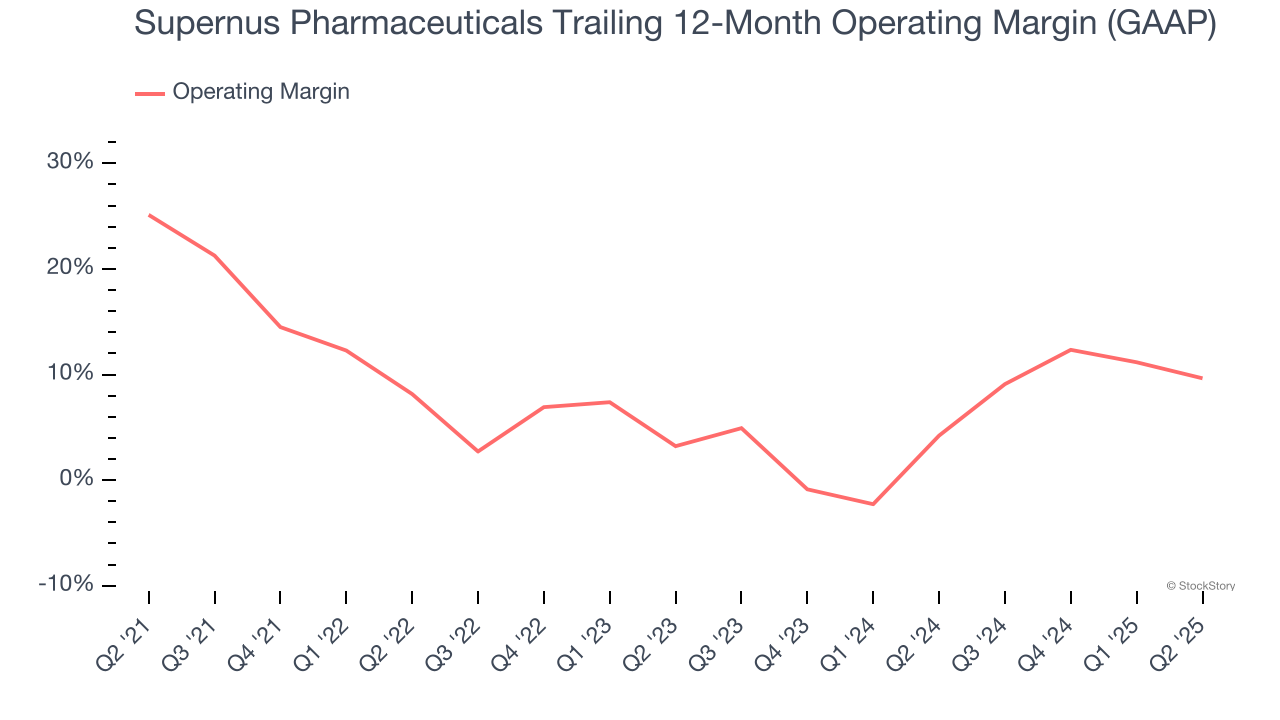
This quarter, Supernus Pharmaceuticals generated an operating margin profit margin of 7.3%, down 6.1 percentage points year on year. This contraction shows it was less efficient because its expenses increased relative to its revenue.
Earnings Per Share
Revenue trends explain a company’s historical growth, but the long-term change in earnings per share (EPS) points to the profitability of that growth – for example, a company could inflate its sales through excessive spending on advertising and promotions.
Sadly for Supernus Pharmaceuticals, its EPS declined by 12.2% annually over the last five years while its revenue grew by 8%. This tells us the company became less profitable on a per-share basis as it expanded.
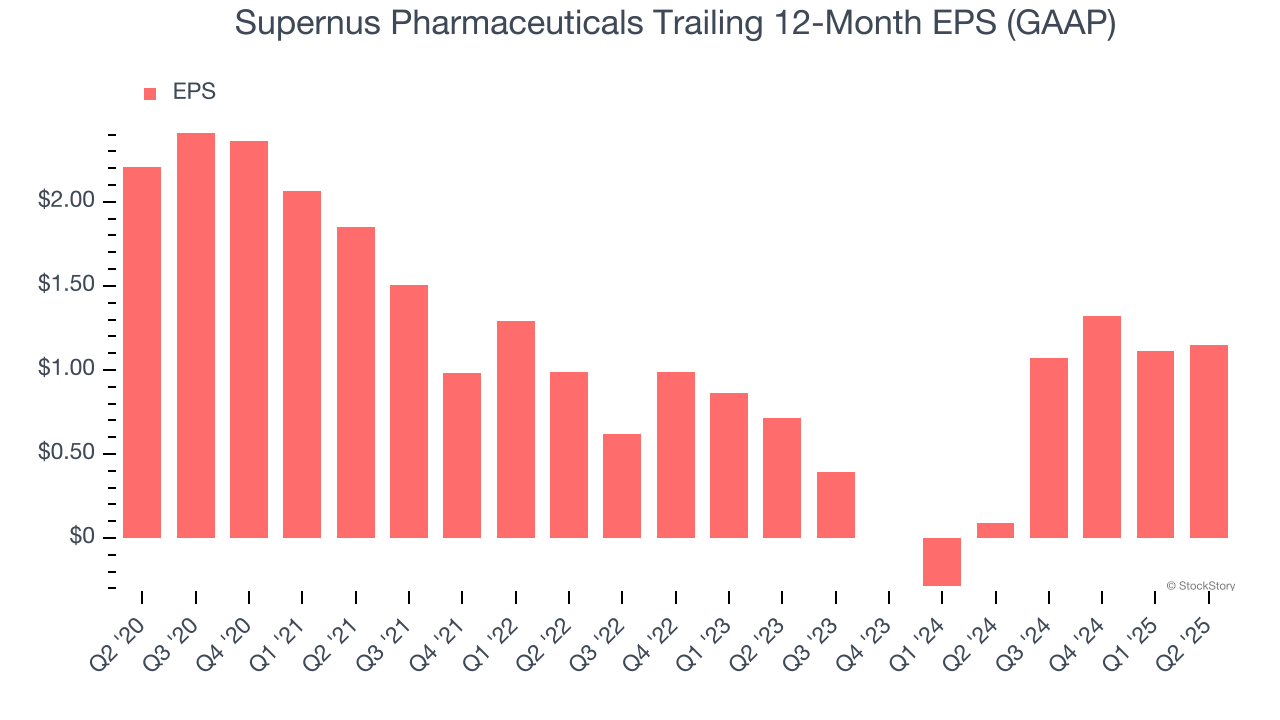
We can take a deeper look into Supernus Pharmaceuticals’s earnings to better understand the drivers of its performance. As we mentioned earlier, Supernus Pharmaceuticals’s operating margin declined by 15.5 percentage points over the last five years. Its share count also grew by 5.6%, meaning the company not only became less efficient with its operating expenses but also diluted its shareholders. 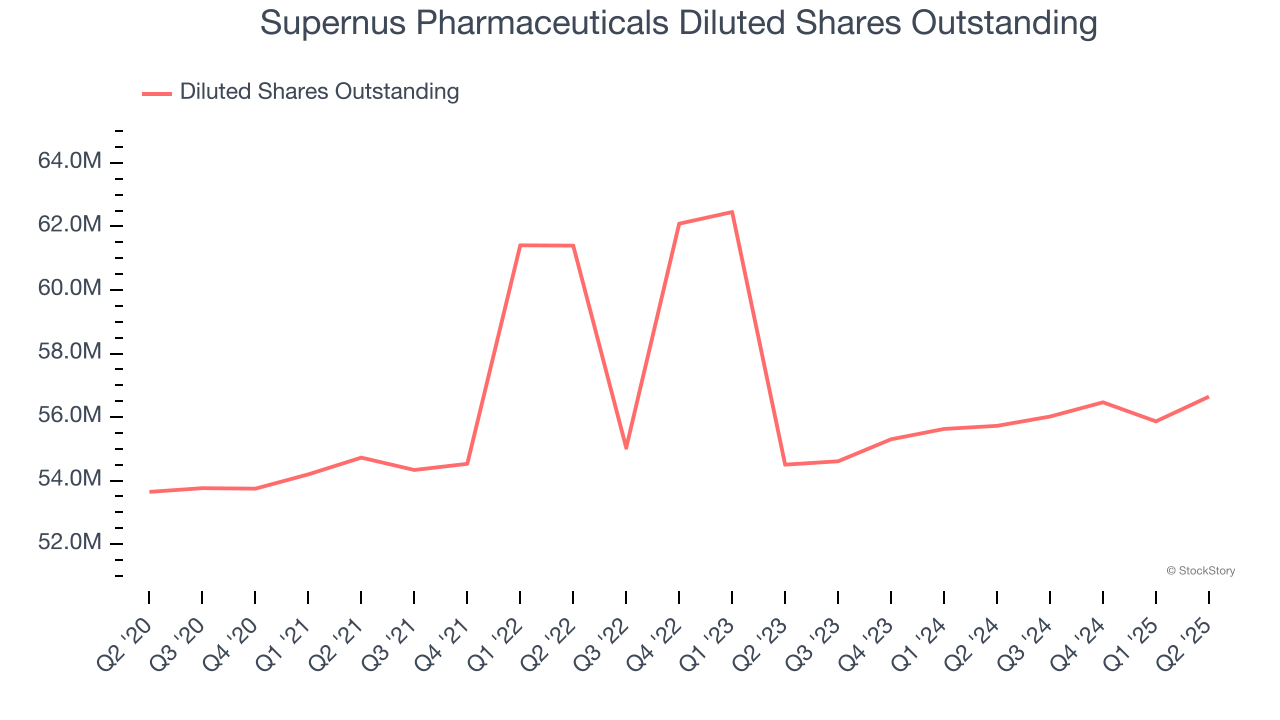
In Q2, Supernus Pharmaceuticals reported EPS at $0.40, up from $0.36 in the same quarter last year. This print easily cleared analysts’ estimates, and shareholders should be content with the results. Over the next 12 months, Wall Street expects Supernus Pharmaceuticals to perform poorly. Analysts forecast its full-year EPS of $1.15 will hit $0.13.
Key Takeaways from Supernus Pharmaceuticals’s Q2 Results
We were impressed by how significantly Supernus Pharmaceuticals blew past analysts’ revenue and EPS expectations this quarter. We were also excited it raised its full-year revenue guidance. Zooming out, we think this quarter featured some important positives. The stock traded up 4.2% to $39.11 immediately following the results.
Supernus Pharmaceuticals had an encouraging quarter, but one earnings result doesn’t necessarily make the stock a buy. Let’s see if this is a good investment. If you’re making that decision, you should consider the bigger picture of valuation, business qualities, as well as the latest earnings. We cover that in our actionable full research report which you can read here, it’s free.
